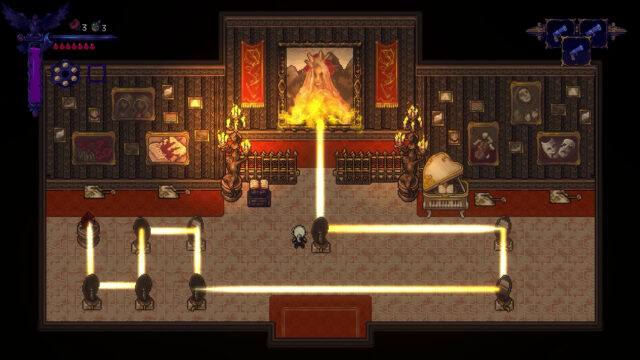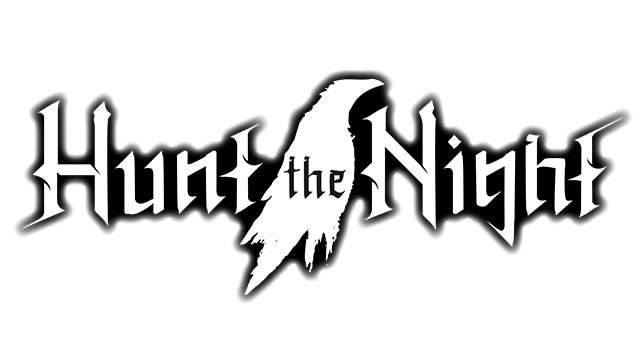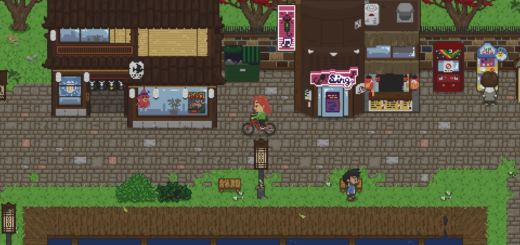Hunt the Night Review
Not-Quite-Big Game Hunting
Newcomer Moonlight Games’ pixel-art action RPG Hunt the Night is a prime example of a game that first and foremost nails its primary selling point, in this case an intense, fast-paced combat system. It also adds on some seriously polished bells and whistles in the form of deep lore, a Lovecraftian art style, and an entrancing, gothic soundtrack. But despite all it has going for it, its story integration and some occasionally wonky sign-posting mean it’s a little short on the all-important glue to bind the other elements together. Still, those looking for an enjoyable and frantic action experience will find a lot to love here.
Medhram is a land whose protectors, the Stalkers, have allowed it to flourish for generations. A land that has enjoyed perpetual Day and managed to keep the Night, and all the beastly horrors that come with it, at bay via a magical Seal. A land beginning the plunge into an age of darkness as the Seal protecting it has been shattered. That is unless Vesper, a member of the order of Stalkers, can reclaim its scattered pieces and reunite them. Along the way, Vesper will need to deal with all manner of things that go bump in the Night, as well as with her own demons.
Hunt the Night‘s top-down visual design is very reminiscent of a 2D Zelda game, and its world design further emulates this ideal. The game opens as Vesper enters Ravenford, an opening dungeon complete with boss fights to conquer. After exiting Ravenford, players must roam the land, using general directions and snippets of information to locate the remaining pieces of the Seal. It isn’t as open-ended as it sounds; some locations can only be accessed after Vesper acquires certain abilities in her travels, giving it a Metroidvania feel at times. Many of these traversal abilities come in the form of Umbra, a sort of shadowy astral projection whom she can conjure at will after a certain point in the story and who plays into Vesper’s backstory; in fact, Vesper and Umbra will have full-on back-and-forth conversations at several key moments.
While Zelda has an unmistakable light-hearted charm, however, Hunt the Night goes for a quite unnerving atmosphere. The land is being ravaged, its people suffering, and signs of corruption are visible everywhere. Villages are overrun by monsters, houses stand empty and abandoned, broken stagecoaches are surrounded by bloody horse carcasses. Pools of blood and viscera are a commonplace sight as Vesper makes her way through Medhram, all painstakingly detailed in pixel art that’s as lovely as it is disturbing. Environments feel hand-crafted, and there seems to be more than a passing Lovecraftian influence to everything. The soundtrack, too, is wonderfully dark and gothic, often consisting of dolorous instrumentals, atmospheric sound effects like church bells tolling and chains rattling, and menacing choral sections full of threatening chanting.
Of course, Vesper is just as dangerous. The game sports a frantic action combat system that places a heavy emphasis on mixing various attack types with fast and frequent dashing; even the traversal system makes use of dashing for some light platforming sections. As a Stalker, Vesper is accomplished in close-quarters combat with a variety of weapons, such as one- and two-handed swords, wrist-mounted blades, and daggers. When a situation calls for attacking from a distance, she also has several firearms at her disposal, including a handgun, a shotgun, and a handheld crossbow. The catch is that ammo is limited to a standard six-shot magazine (with different weapons burning through this count at different rates), and once depleted it can only be replenished by getting up-close and personal with enemies, with a single bullet regenerating for every third melee hit landed on a foe. It’s a really interesting and well-tuned give-and-take between offensive strategies in the chaos of battle, and lengthier boss encounters in particular make the most out of this system.
Boss encounters are also a high point when it comes to enemy designs. The rank-and-file enemy mobs players will face are all well and good, with each enemy type requiring different approaches to take down. Some will launch projectiles at Vesper while others may telegraph a strong charge attack or wildly swing a mass of tentacles her way as the Lovecraftian design inspirations shine through. Bosses, however, are in a league of their own, featuring a good variety of moves that must be read and frantically avoided while retaliating whenever possible. A typical boss fight will see blows raining down on Vesper from all around while projectiles and area attacks fill the arena, leading to an intricate dance that must be mastered to proceed. Vesper, meanwhile, must balance taking shots from a distance with darting in for melee strikes that will recharge her ammo. While the game has a fair challenge, bosses act as roadblocks and are often especially difficult to deal with. A notable exception to this is the game’s final boss, who is a bit of a pushover and can be easily taken down twice to unlock both of the game’s endings in quick succession. Even so, combat is a consistently fluid and engaging dance, even when simply facing off against a group of lesser foes.
Despite the effort put into making it look hand-crafted, the world of Medhram reveals itself to be less intriguing than it appears. For starters, it’s not a particularly large world map, and the handful of dungeon areas can be traveled between in fairly short order. A fast-travel system cuts down on the amount of backtracking but lessens the player’s familiarity with the world. Thankfully, the large dungeon sections expand the scope quite a bit. With the game being a bit on the short side at just north of ten hours, and lacking a proper map, it’s no wonder that Medhram’s geography never really translates into the player’s head, and the world layout remains a quasi-nebulous mystery. Progression is occasionally awkward, as even with clues where to go and how to get there given, the world rarely seems to conform to these very well, making for some unclear signposting when moving from one objective to the next.
Apart from battling one’s way from one place to the next, there are a rather limited amount of ways to interact with the world and get to know it better. While much emphasis is placed on combat to advance through the game, sometimes the only way forward is for Vesper to try her hand at puzzle-solving. Combing through a spooky mansion can reveal the right order to play a tune to open a locked door, while elsewhere Vesper must study the paintings in a gallery room to reveal the combination to open a nearby safe. A major side activity — monster hunts — is introduced early on, with players able to purchase contracts to hunt down powerful optional foes in order to earn health-boosting rewards. All ten of these contracts can be purchased early on, but must be located throughout the world via exploration. However, players are given nothing to go on aside from a screenshot, which means precious little, particularly that early on in the game. Thorough players may stumble upon another, smaller sidequest, requiring them to scour the land to obtain some lost books and return them for a reward, which takes almost the entire length of the game, with any of the books being easily missed.

With plenty of puzzles, there are numerous opportunities for Vesper to use her brains instead of her brawn.
While these sidequests fall short in terms of storytelling, Hunt the Night does put forth an effort to pepper in the occasional narrative world-building element, as well as quite a bit of unlockable lore in the form of codex entries. For example, solving the mystery of a voice calling out from a dried-out well on outskirts of an abandoned village presents a brief interesting diversion, and the many item descriptions and codex entries unlocked during the game shed light on the world’s factions, religious practices, and many other aspects. Unfortunately, Vesper’s overarching narrative is seldom served by these tidbits of lore, and much of it is presented in a vacuum, with little to no context of how it all ties together. Players will stumble upon a laboratory facility that appears to have played host to horrific experiments and is somehow linked to Vesper’s past. While one might expect some intriguing backstory about to be unearthed, the game doesn’t commit enough to make any concrete connections, and the whole matter seems to be dropped wholesale as soon as players leave the facility behind. It’s an addition that works well on paper, but doesn’t add enough to the experience to really move the needle.
Hunt the Night is a great example of what a first-time developer can accomplish. It ticks almost all of the expected boxes, while nailing the balance and cohesion between its melee and ranged fighting techniques, and how one relies on the other. The game is a solid challenge, particularly in its boss fights, without ever feeling unfair. The times it doesn’t fully score a win at least show enough potential to hint at what could have been. Its relatively short runtime offers a tight and enjoyable experience that could do with a little bit more content and world-building to iron out the well-intentioned content provided. With a very solid presentation backing it up, it’s an easy recommendation for dark action RPG fans.
Disclosure: This review is based on a free copy of the game provided by the publisher.


Combat's two primary aspects play off each other beautifully
Visuals masterfully marry Lovecraftian themes to a gothic sensibility
Rich soundscape that effortlessly immerses the player
Story takes very little advantage of its original lore
Lacking side content
Haphazard world layout leads to some unclear signposting








Recent Comments